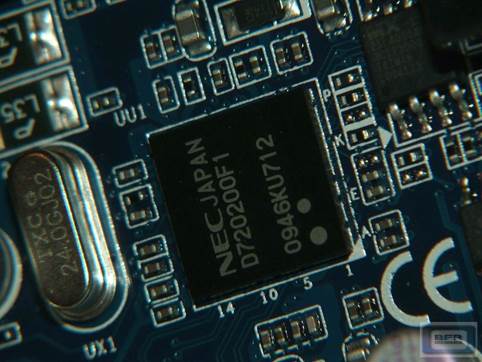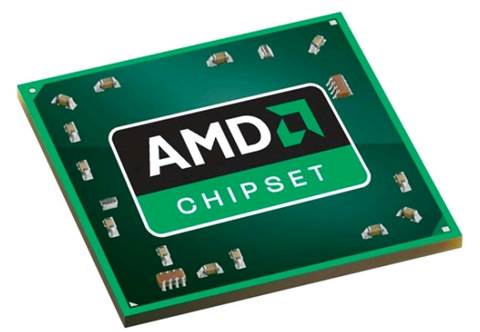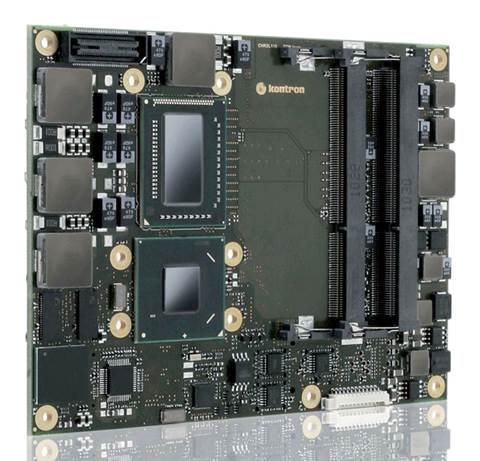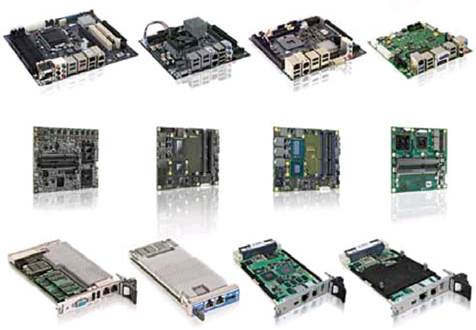With the launch of chipsets
incorporating USB 3.0 support, this latest USB interface standard is now
becoming widely available on board level and system platforms. How long,
though, will end-users in the industry have to wait before they can benefit
from this technology in OEM products like vision systems? And how does the cost
situation look?
USB 3.0 is emerging as the new interface
standard for fast peripherals. This need is evident in the field of appliances
that can generate added value from this nominal 5Gbps performance boost beyond
the maximum USB 2.0 performance (nominal 600 Mbps). With up to 2400 Mbps of
usable data rate, it achieves a 7.5 times faster throughput than with USB 2.0
(320 Mbps).

With
the launch of chipsets incorporating USB 3.0 support, this latest USB interface
standard is now becoming widely available on board level and system platforms.
Applications that profit from this
performance boost are, for example, fast and high-resolution printers and
scanners, or mass storage. Further examples are high-resolution rear-view
cameras for all-round visibility in trucks, high-resolution test and measurement
devices, and a vast number of vision applications like camera-supported pick-and-place
(PnP), intelligent surveillance systems in the traffic technology, or digital
microscopes, to name a few.
USB 3.0 focus market vision systems
In addition to Gigabit Ethernet, today in
the vision area it is already becoming apparent that USB3 vision for
close-range applications of up to five meters will evolve into the leading
standard. The USB3 vision standard is entirely based on the USB 3.0
specification and additionally inserts GenICam - a generic programming
interface that simplifies application porting and promotes interoperability of
USB devices from different manufacturers. Customers benefit not only from the
actual vision specifications but also from the advantages of USB 3.0 itself.
Advantages of USB 3.0
Apart from the immense performance boost in
comparison to USB 2.0 - the USB 3.0 bus is backwards-compatible to USB 2.0 and
1.1. It further excels due to its simple cabling that provides power and data
communication in one cable, which, in turn, serves to reduce installation work.
Also, manufacturers are making their peripheral devices PnP-capable, so all you
need for this is defined 'on the wire.' That results in significantly less implementation
work for the system integrator.

The
USB 3.0 bus is backwards-compatible to USB 2.0 and 1.1.
What's more, in future, USB 3.0 will be
found on nearly all industrial computer platforms as USB 3.0 support will immediately
be integrated into the chipsets - and presumably for a very long time to come.
That saves a great amount of hardware development costs in comparison to
standards like Camera Link, even though this standard depending on the
manufacturer can process an 80-bit video track with up to 6.8 Gbps or 5400
Mbps, and continues to be supported via PCI- or PCIe-based frame-grabber
cards.
Consumer market pushes USB 3.0 cameras
If you observe the consumer camera market
which is already switching to USB3.0, it becomes clear that the corresponding
embedded camera technology can be used for close-range industrial
applications. The main advantages therefore are reduced costs with added
performance, more comfort and higher integration. Also, considering the fact
that in video applications the processing of a multitude of tasks can be
handed over to a GPU rather than to a frame grabber, in this area and in the
long term, the PC ecosystem offers the more promising solution for a large
range of new designs.
USB 3.0 now available in the chipset
The most significant cost factor in PC
implementation of USB 3.0 is the availability in the chipset. Since the launch
of third-generation Intel Core processors and AMD Embedded R-Series
processors, the new interface standard USB 3.0 has been integrated into these
manufacturers' chipsets and thus is available as a standard on embedded board
and system level, which proves immense cost-saving.

USB
3.0 now available in the chipset
USB 3.0 implementations by OEMs
Widespread introduction into the industrial
environment has not yet taken place and in terms of embedded PC technology can
be seen as still in its infancy, as the USB 3.0 chipsets have only just been
launched and still have to be designed-in.
On the other hand, a relatively inexpensive
way to realize this is not really available: At present, third-generation
Intel Core processors are not yet available in the inexpensive Celeron
variants. Consequently, a corresponding inexpensive implementation does not
exist. And the AMD R-Series must first overcome design-in obstacles. So bearing
this in mind, it will take a certain amount of time for inexpensive OEM
implementations to appear on the market, unless alternative solutions are
developed in the meantime with, for example, USB 3.0 bridges.
Current most cost-effective USB 3.0
implementations
This can be achieved, for example, with
Celeron processors of the second-generation Intel Core (codenamed Sandy
Bridge) and an additional NEC bridge for USB 3.0. Using a method like this,
solutions ready for serial production have been realized since the beginning of
2011. One such solution was a COM Express type 6-based computer-on-module (Fig.
1). It offers developers a fast time-to-market for this highly attractive
interface. This design with USB 3.0 is one of the first embedded implementations
which customers have been able to use before the introduction of chipsets that
support USB3.0 and has thus enabled them to accelerate time-to-market of USB
3.0 platforms.

The
COM Express basic computer-on-module with type-6 pinout comes with 1x1.00GHz to
2x1.60GHz scalable Intel Celeron processor and HM65 PCH. With two optional USB
3.0 interfaces, it offers an especially cost-efficient USB 3.0 configuration,
which has been available since the beginning of 2011 for early adoptors, and is
fitted with the NEC USB 3.0 Bridge
The importance of such early availability
of latest technologies is especially crucial for innovative companies, as
when the chipsets are launched, end-user awareness and the demand for USB 3.0
increase suddenly. This gives a real competitive edge to OEMs who want to
deliver USB 3.0 implementations parallel to chipset launches. That is possible
only if you already have this type of technology ready for mass production.
First customer implementations with USB
3.0
A first customer using the module, which
works with a USB 3.0 bridge on a solution with Intel Celeron processor of the
'Sandy Bridge' generation, will present a first, highly integrated solution at
the Vision 2012 which uses cost-efficient USB 3.0 camera modules. Another
customer is currently developing a traffic surveillance solution and a third is
creating a box PC for SFF vision applications, to name just three examples in
the vision segment.

With
twelve modules and boards in the form factors COM Express, Mini-ITX, Flex-ATX
and CPCI, AMC as well as VPX, there is already a wide standard assortment of
latest solutions based on Intel or AMD processors. These solutions already have
USB 3.0 integrated in the chipset and can be adapted to suit customers’
specifications
All these applications are projects that
promise technological leadership in the corresponding segment - for example, in
combination with M2M solutions. Their competitive advantage time-wise in
comparison to chipset- based solutions is at least the design-in phase or
probably even longer, assuming that in future one wants to opt for using Ivy
Bridge-based Intel Celeron processors.
USB 3.0 technology platforms for today
and tomorrow
OEMs who did not start designing at the
beginning of 2011, now, of course, have a much wider choice. To start using
this technology cost-efficiently, today, they will nevertheless either have to
use the Celeron version with USB 3.0 bridge, as it will be a cost-efficient
solution in the long term, or the new AMD Embedded R-Series processors, if
attractive integrated 'embedded graphics' are required along with attractive
pricing. It goes without saying that if inexpensive solutions are required,
the third-generation Intel Core processors can be designed-in, in order to put
OEMs in a position to directly move to the same platform when the Intel Celeron
processor version presumably becomes available at a later date. But for
high-end solutions, there is no way around the third-generation Intel Core
processors. Some customers will also be looking for a solution based on ARM
processors and USB 3.0.
Hardware integration services for USB
3.0 solutions
All these solutions are already possible
today. And, for all these platforms, embedded computer manufacturers offer
standard products, custom designs and corresponding hardware integration
services. So customers can concentrate on what they do best - the application
itself. The corresponding application-ready embedded computing platforms and
the matching hardware integration services including software support for, say,
drivers or migrations are provided by a partner. The partner on the basis of
serial standard products delivers fast and efficient support for individual
implementations in a very close and trusting development partnership. In this
way, bottlenecks can very efficiently be done away with.

Along
with modular AMC- and VPX-based systems, with the KISS 2U server family, first
proofs-of-concept on system level have already been realized. The servers are
equipped with a Flex ATX motherboard and offer several PCIe 3.0 interfaces as
well as a PCI port along with USB 3.0. In comparison to designs with
second-generation Intel Core processors, the KISS server in 2U rack mount
format offers up to 20 per cent more computing performance, 50 per cent more
graphic performance and an increase of up to 40 per cent in
performance-per-watt